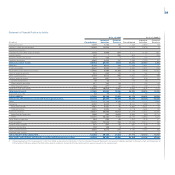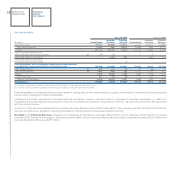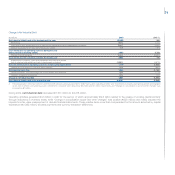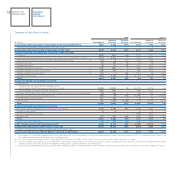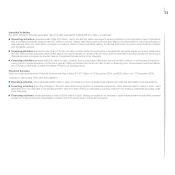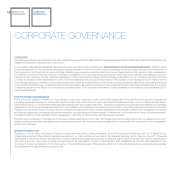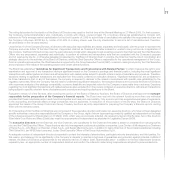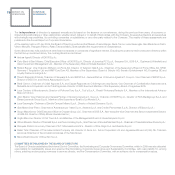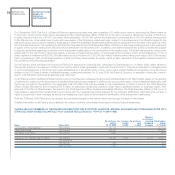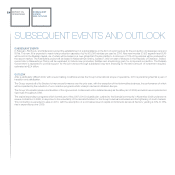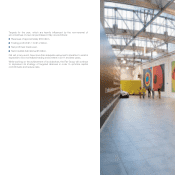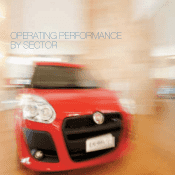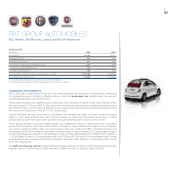Chrysler 2009 Annual Report Download - page 80
Download and view the complete annual report
Please find page 80 of the 2009 Chrysler annual report below. You can navigate through the pages in the report by either clicking on the pages listed below, or by using the keyword search tool below to find specific information within the annual report.
79
INTERNAL CONTROL SYSTEM
The Board established the “Guidelines for the Internal Control System”, which came into effect on 1 January 2003, and constituted a revision of the
procedures established in 1999, including adoption of changes to the Corporate Governance Code. Essential elements of the Internal Control System are
the Code of Conduct, adopted in 2002 to replace the Code of Ethics and subsequently revised in 2010, and the Compliance Program, adopted by the
Board of Directors in implementation of regulations on the ‘Liability of Legal Persons’ pursuant to Legislative Decree 231/2001, as amended. The Code of
Conduct embodies the principles of business ethics to which the Company adheres and with which directors, statutory auditors, employees, consultants
and partners are required to comply.
During 2009, as a result of changes in law and legal precedent, the Compliance Program pursuant to Legislative Decree 231/2001 and the Guidelines
for adoption of the Program by the Group’s Italian companies were revised.
With these amendments, new criminal offenses were included and the relevant sensitive processes were identified. In particular, the Compliance Program
was amended to include crimes relating to: “Organised crime”, “Counterfeiting money, public credit cards, duty stamps, and distinguishing instruments or
marks”, “Offences against industry and commerce”, “Offences related to the violation of copyright laws”, and “Induction offences for not making declarations
or making false declarations to judicial authorities”.
The Compliance Program Supervisory Body is composed of the Compliance Officer, the Senior Counsel, and an external advisor. It has its own Internal
Policies and Procedures and its activities are based on a specific Supervisory Program. This body meets at least once per quarter and reports to the Board
of Directors (including through the Internal Control Committee) and the Board of Statutory Auditors.
In application of the Compliance Program, the Code of Conduct, and the provisions of the Sarbanes-Oxley Act, to which the Company was subject insofar
as it was listed on the NYSE, on whistleblowing, the Whistleblowing Procedures were adopted as of 1 January 2005 for management of reports and
claims filed by individuals inside and outside the Company in relation to suspected or presumed violations of the code of conduct, fraud involving company
assets or financial reporting, oppressive behaviour towards employees or third parties, reports or claims regarding accounting, internal accounting controls,
and independent audits.
The Procedure for the Engagement of Audit Firms regulates the engagement by Fiat S.p.A. and its subsidiaries of audit firms and those companies
or professional firms that maintain an ongoing relationship (so-called network) with the audit firms, in order to safeguard the principle of independence of the
firms engaged to audit the financial statements.
Fiat has put in place system of risk management and internal control over financial reporting based on the COSO Report model, according to
which the internal control system is defined as a set of rules, procedures and tools designed to provide reasonable assurance of the achievement of
corporate objectives. In relation to the financial reporting process, the objectives are the reliability, accuracy, completeness and timeliness of the information
itself. Risk management constitutes an integral part of the internal control system. The periodic evaluation of the system of internal control over financial
reporting is designed to ensure the overall effectiveness of the components of the COSO Framework model (control environment, risk assessment, control
activities, information and communication, monitoring) in achieving those objectives. As mentioned previously, the principal characteristics of the system of
risk management and internal control over financial reporting are provided in the Annual Report on Corporate Governance.
Documents and financial information regarding the Company are made public, including via the internet, in accordance with the provisions of the Disclosure
Controls & Procedures adopted in the past to comply with the US regulation applicable at the time.
With reference to the “Conditions for the listing of shares of companies having control over companies incorporated and regulated under the laws of a non-
EU member State”, pursuant to Articles 36 and 39 of the Market Rules, the accounting systems in place at the Company and its subsidiaries, as discussed
in the Annual Report on Corporate Governance, enable public disclosure of the accounts prepared by companies included in the scope of application of
the Regulation and used in preparation of the consolidated financial statements and are adequate for the regular provision to management and the Parent
Company’s auditors of information necessary for preparation of the consolidated financial statements. In addition, there is an effective flow of information to
the Parent Company’s auditors, including regular information on the composition of corporate bodies within all subsidiary companies and the position held
by each member. The Company is also is responsible for systematically maintaining and updating centralised records of formal documents related to the
By-laws and delegation of powers to members of the corporate bodies. The requirements of Article 36 (a) (b) and (c) of the Market Rules issued by Consob
have therefore been satisfied.
During the year, no companies incorporated under the laws of a non-EU member State were acquired which, on an individual basis, are significant for the
purposes of the aforementioned Regulation.


